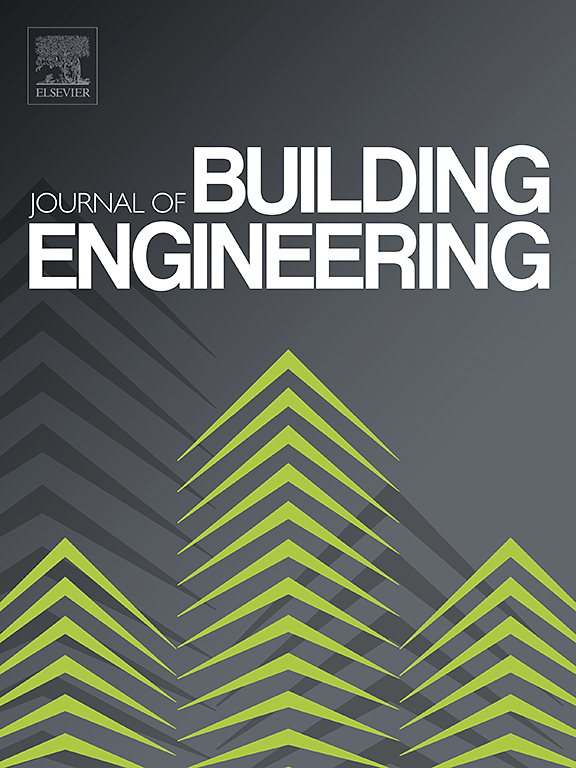Ten questions on the generation of Typical Solar Radiation Years for daylight simulations: A systematic review
IF 7.4
2区 工程技术
Q1 CONSTRUCTION & BUILDING TECHNOLOGY
引用次数: 0
Abstract
Daylighting studies always bring new requirements of growing sophistications, following almost identical simulation procedure that yields spatiotemporal luminous results. While these simulations require defining a complex set of input variables, architects can easily fine-tune the precision of internal inputs, but external inputs, especially Typical Weather Datasets (TWDs), remain beyond their direct control. The implications of adopting weather data in simulation tools, particularly solar radiation, have thereby been acknowledged, especially when initial approximations of daylighting performance are required during the early stages of design. This gave rise to two distinct, yet related, active areas of research: (i) comparing the capabilities of different TWDs under various daylighting situations, and (ii) generating a specific type of TWDs that depends mainly on solar radiation data, known as Typical Solar Radiation Years (TSRYs). Within the context of daylight simulations, this work represents an unprecedented contribution that systematically investigates the growing directions on the comparison of TWDs (84 comparisons over 11 studies, published between 2013 and 2021) and generation of TSRYs (183 generation attempts over 27 studies, published between 1994 and 2023). Building upon ten established questions, this work puts a particular focus on three hierarchal review scopes: original long-term data, generation process and limitations. This review is conducted with the architects’ nature in mind to clarify nuances of weather datasets and their generation procedures, uncovering knowledge gaps in the related research domain, while sketching future perspectives and missing opportunities. Ultimately, this shall improve the reliability of adopting these datasets in daylight simulations, making them more comprehensible for architects with diverse expertise and backgrounds.关于为日光模拟生成典型太阳辐射年的十个问题:系统回顾
日光照明研究总是带来日益复杂的新要求,其模拟程序几乎完全相同,都会产生时空照明结果。虽然这些模拟需要定义一系列复杂的输入变量,但建筑师可以轻松地对内部输入变量的精度进行微调,而外部输入变量,尤其是典型天气数据集(TWDs),则仍然无法直接控制。因此,在模拟工具中采用天气数据,特别是太阳辐射数据的影响已得到认可,尤其是在设计初期需要对采光性能进行初步估算时。由此产生了两个不同但相关的研究领域:(i) 比较不同采光情况下不同双向数据的能力,(ii) 生成一种主要依赖于太阳辐射数据的特定类型的双向数据,即典型太阳辐射年(TSRYs)。在日光模拟方面,这项工作是一项前所未有的贡献,它系统地研究了有关双向日照值比较(11 项研究中的 84 项比较,发表于 2013 年至 2021 年)和 TSRYs 生成(27 项研究中的 183 次生成尝试,发表于 1994 年至 2023 年)的发展方向。在十个既定问题的基础上,这项工作特别关注三个分级审查范围:原始长期数据、生成过程和局限性。这项研究以建筑师的性质为出发点,旨在澄清气象数据集及其生成过程的细微差别,发现相关研究领域的知识空白,同时勾勒出未来的前景和错失的机会。最终,这将提高在日光模拟中采用这些数据集的可靠性,使具有不同专业知识和背景的建筑师更容易理解这些数据集。
本文章由计算机程序翻译,如有差异,请以英文原文为准。
求助全文
约1分钟内获得全文
求助全文
来源期刊

Journal of building engineering
Engineering-Civil and Structural Engineering
CiteScore
10.00
自引率
12.50%
发文量
1901
审稿时长
35 days
期刊介绍:
The Journal of Building Engineering is an interdisciplinary journal that covers all aspects of science and technology concerned with the whole life cycle of the built environment; from the design phase through to construction, operation, performance, maintenance and its deterioration.
 求助内容:
求助内容: 应助结果提醒方式:
应助结果提醒方式:


